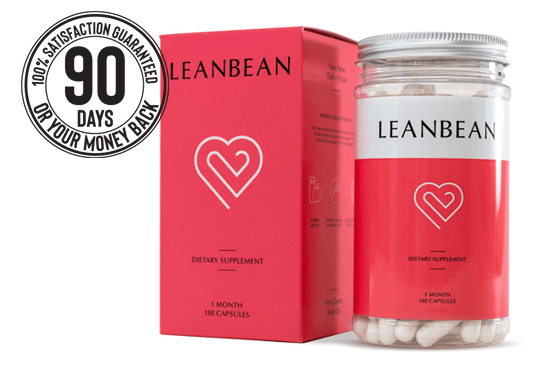Learning about what makes up a healthy lifestyle can be confusing. There’s a lot of jargon, and tons of acronyms that can be hard to decipher.
In this article we’ll define ten terms you’ll see fairly often. Knowing what each of these means puts you in a better position to build a healthy lifestyle.
Here’s what we’ll cover:
- What is BMI?
- What are carbs?
- What is ketosis?
- What is a calorie?
- What is metabolism?
- What is aerobic exercise?
- What is anaerobic exercise?
- What is a protein?
- What is RDA?
What is BMI?
BMI stands for Body Mass Index. BMI is a numerical value found by dividing your body mass by the square of your height.
Photo by SHVETS production from Pexels
BMI is useful because it gives at-a-glance information about whether your weight is healthy for your body shape.
So if you are 1.65 metres tall and weigh 60kg, your BMI would be 22.04.
And as a very general rule, this is what BMI values mean:
- Below 18.5: Underweight for your height
- Between 18.5 and 24.9: Healthy weight for your height
- Between 25 and 29.9: Overweight for your height
- Above 30: Obese for your height
As we said this is a very general rule. For example: muscle and fat have different densities meaning that if you’re very muscular, your BMI may suggest you’re overweight when you’re not.
Doctors and health professionals will usually look at more than one metric to determine whether your weight is healthy for your body shape, which means you shouldn’t get too hung up on BMI.
Healthy weight loss is about making changes to your lifestyle and building good habits, rather than focussing too much on the numbers.
What are carbs?
Carbs are carbohydrates, a type of essential nutrient. Our bodies convert carbohydrates into glucose which is then used for energy.
Photo by Dana Tentis from Pexels
There are two types of carbohydrate: simple and complex.
- Simple carbohydrates are things like sugar and fruit juice concentrate. They’re small molecules and are broken down more quickly.
- Complex carbohydrates are called starches and are found in bread, pasta, vegetables and many other foods. As larger molecules they take longer to break down.
Complex carbohydrates are considered healthier as they are more filling, take longer to break down meaning they provide energy for longer, and have higher nutritional value.
Prioritising complex carbohydrates is a good way to select for healthier foods in your diet.
What is ketosis?
Ketosis is a process whereby your body burns fat for fuel rather than carbohydrates. It underpins ketogenic diets, and the abbreviation ‘keto’ can refer to both ketosis and a ketogenic diet.
Photo by Ivan Samkov from Pexels
Some people choose to follow a ketogenic diet as a way to burn stored fat, and doing so involves prioritising foods with low carbohydrate content and high fat content.
We’ve written in more detail about ketosis and ketogenic diets here.
What is a calorie?
A calorie is a unit of energy, and there’s some confusion around the name:
- A small calorie, sometimes written as calorie with a small ‘c’, is the amount of energy required to heat a gram of water by one degree Celsius.
- A large calorie, also called a kilocalorie (kcal) or even Calorie with a capital ‘C’ is the amount of energy required to heat a kilogram of water by one degree Celsius.
Photo by Jessica Lynn Lewis from Pexels
Most food labels show caloric values in kcal, so it’s helpful to know the difference.
Just like with BMI, we don’t recommend paying too much attention to specific numbers of calories. Instead, aim to eat more healthily in general: you can check out our tips for sustainable weight loss to get some pointers!
What is metabolism?
Metabolism is the process by which the energy in the food you eat is converted into energy that your body can use for fuel.
Photo by Yan Krukov from Pexels
Metabolism happens in your body all the time: at rest, while you’re asleep, while you’re exercising, and so on. Your metabolic rate shifts depending on the level of activity you’re engaged in.
Different people have different metabolic rates, too. Researchers aren’t quite sure what causes this variation.
Metabolism is another thing that it’s good to know about, but not worth focussing on too much. Exercising can increase your metabolic rate, and so can certain food types. Others can slow it down. But what yields the best results, as we’ve said already, is healthy habits.
What is aerobic exercise?
Aerobic means ‘with air’, and aerobic exercise is any exercise in which energy is produced with oxygen.
Photo by RUN 4 FFWPU from Pexels
The formula for aerobic respiration is as follows:
Glucose + oxygen = energy + water + carbon dioxide
This type of exercise is associated with lots of health benefits like improved cardiovascular health, lower blood pressure, regulated blood sugar, and so on.
Exercise is a crucial part of a healthy lifestyle, and aerobic exercise is a great way to burn calories. Aerobic exercise includes endurance activities like swimming, running, walking, cycling, and so on.
What is anaerobic exercise?
Anaerobic means ‘without oxygen’, so anaerobic exercises are ones where energy is produced without oxygen being present – also called anaerobic respiration.
Photo by Leon Ardho from Pexels
The formula for anaerobic respiration is:
Glucose + enzymes = carbon dioxide + lactic acid
Anaerobic respiration has a lower energy output than aerobic exercise. But because oxygen isn’t required, it means your body can still generate energy when the energy demand exceeds the amount of oxygen available.
So, for intense bursts of activity like weight lifting and circuit training, anaerobic respiration is perfect. And if you’ve ever felt ‘the burn’ during exercise, that’s because of the buildup of lactic acid in your muscles: a clear sign that you’ve been exercising anaerobically.
What is a protein?
Proteins, like carbohydrates, are essential nutrients. Each protein is a string of amino acids.
Photo by Nicola Barts from Pexels
Proteins perform thousands of different functions in your body: everything from creating enzymes to carrying oxygen in your blood.
Proteins are built from amino acids. Our bodies can’t store amino acids, so these building blocks must be found elsewhere.
Proteins in your diet are either used as is, or broken down and used as a source of amino acids
Ensuring you get plenty of protein in your diet gives your body the materials it needs to keep you healthy.
What is RDA?
RDA stands for recommended dietary allowance, and refers to the amount of a particular vitamin, mineral or nutrient that should feature in your diet.
Photo by Trang Doan from Pexels
Understanding your RDA helps you to build a picture of the types of food that should feature in your diet. General RDA values are given on food packaging, but to find out the RDAs specific to your body shape and metabolism, you can speak to a nutritionist.
Having too much of certain things in your diet can cause harm. RDA values are designed to help you regulate the amount of sugar, salt, fat, and other nutrients that you consume.
A little clarity
Hopefully the definitions above give you a little clarity when you’re on your journey towards a healthy lifestyle. ‘Knowledge is power,’ as the old saying goes!
Disclaimer: The information on the Leanbean blog does not constitute medical advice and should not be used as such. If you would like to learn more about your dietary requirements and related aspects of your health, speak with a registered medical professional.











